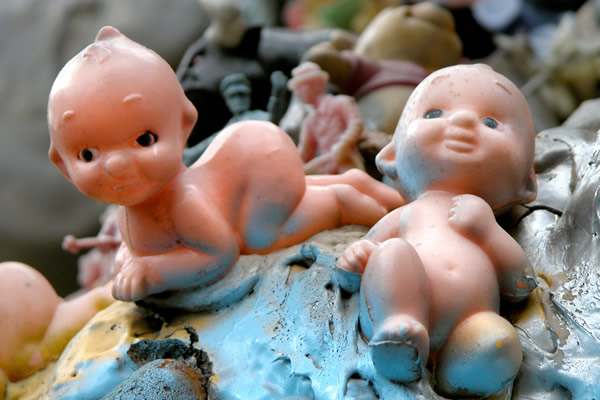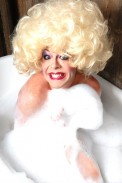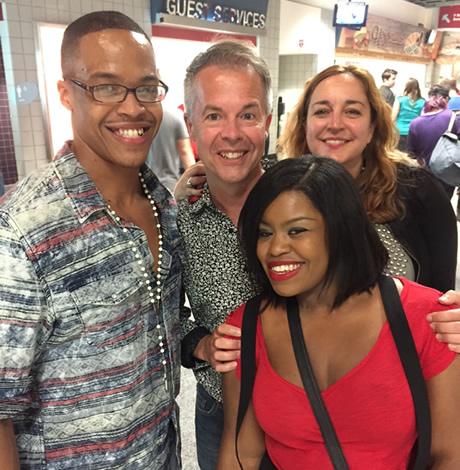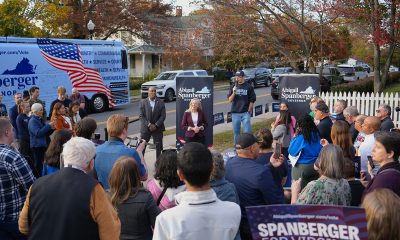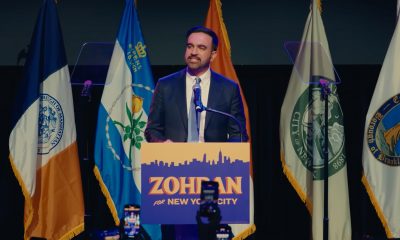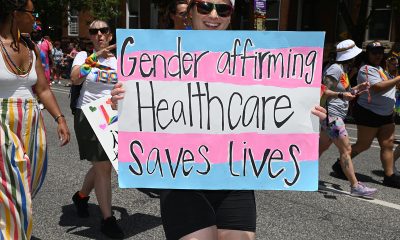Arts & Entertainment
‘Zooming’ in on details
Local drag performer branches into photography with Artomatic exhibit
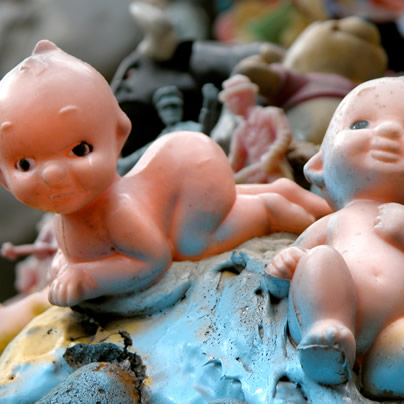
Artomatic 2012 (1851 S. Bell St.) has already started, but there’s still plenty to see and do including many musical performances, film screenings and more.
Philip Gerlach, also known as his alter-ego Queen Bambi, is one of the artists featured this year, with his first-ever exhibit showcasing his photography.
“I was encouraged by another artist … in order to get my work out there,” Gerlach says. “Artomatic was a great launching ground.”
Gerlach has been taking photos since he was 5, when as a reward his father gave him an old instamatic camera. But he never intended on making a career out of it — it was always a hobby.
Gerlach attended West Virginia University, studying animal and veterinary science when he took a photography class during his last semester. His passion for the class changed his career path, leading to a second degree in graphic design.
He is now coming on 15 years as the sole owner and creative director of Gerlach Design.
Gerlach’s exhibit focuses on three series of images he’s been working on.
One series, “Child’s Play,” focuses on found art, zooming into different elements that might not be seen otherwise.
“There has to be an obscure detail that might be missed by most people,” Gerlach says of his process. “I try to find a story within something that might be overlooked. I’m a very detail-orientated person in everything that I do.”
The toys pictured in this series were part of various cars Gerlach saw on display in Baltimore.
The other series are “Oohs & Aahs,” featuring self-portraits of his alter ego, Bambi, and “Zoom,” a continuing series featuring light and movement, which Gerlach says reflects his life and “fascination with all that sparkles.”
Gerlach isn’t just into visual arts, but performance arts as well, using his alter ego to help raise money for various local organizations, particularly HIV/AIDS charities.
“Becoming comfortable on stage in drag, led to opportunities for me … to serve organizations … to use my character power to raise funds, sell raffle tickets and promote events,” Gerlach says. “I’ve done fundraising for [Food & Friends] in drag for seven years … on a volunteer basis.”
This may be Gerlach’s first year participating in Artomatic, but it’s not his first exposure to the event. He first went seven or eight years ago when the event was held in D.C. and opened on Halloween night. He went dressed in drag in a deer costume.
The festival requires at least 15 volunteer hours from the artists and Gerlach spent his hours helping set the space up.
“It’s been a great networking experience,” Gerlach says. “I chose to do those … laboring in the volunteer space … along with other artists and its been a great way to … realize just how tremendously huge the art community in Washington is.”
This year, the month-long art festival is being held in a former office building slated for demolition. There are 10 floors of art by more than 1,000 artists spanning several mediums from visual art to fashion and more.
Some of the upcoming special events include a free demonstration on how to draw popular superheroes by Utrecht on Friday at 7 p.m., an artist social on Saturday at 8 p.m., a meet the artists night June 2 at 7 p.m. and more.
There’s also a weekly “Art-to-Go” marketplace on Saturdays from 1 to 6 p.m.
Artomatic is open Wednesdays and Thursday from noon to 10 p.m., Fridays and Saturdays from noon to 1 a.m. and Sundays from noon to 5 p.m.
For more information on Artomatic and a complete list of events, visit artomatic.org. There’s even a mobile version of the site for the day’s event schedule.
For more information on Gerlach and his design business, visit gerlachgraphic.com. For more information on his photography and to see his line of wearable art, visit urbangrudge.com.
Photos
PHOTOS: Cheers to Out Sports!
LGBTQ homeless youth services organization honors local leagues
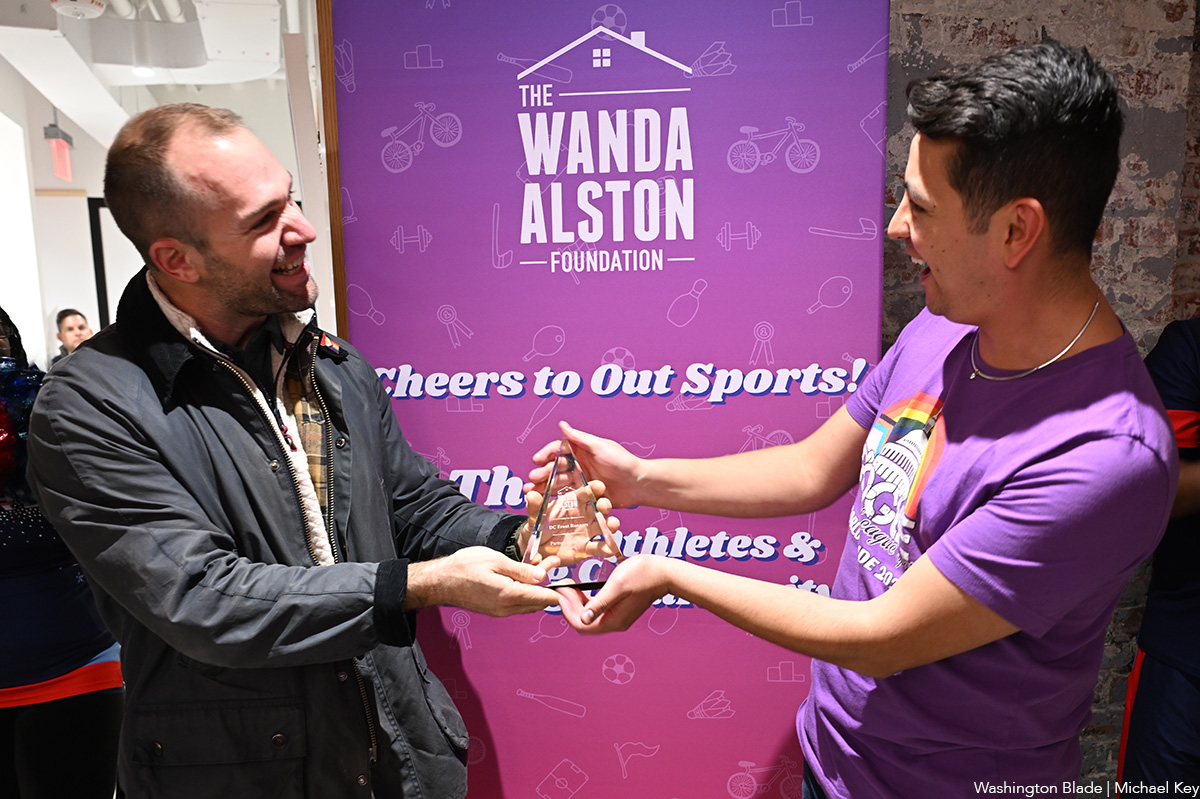
The Wanda Alston Foundation held a “Cheers to Out Sports!” event at the DC LGBTQ+ Community Center on Monday, Nov. 17. The event was held by the LGBTQ homeless youth services organization to honor local LGBTQ sports leagues for their philanthropic support.
(Washington Blade photos by Michael Key)

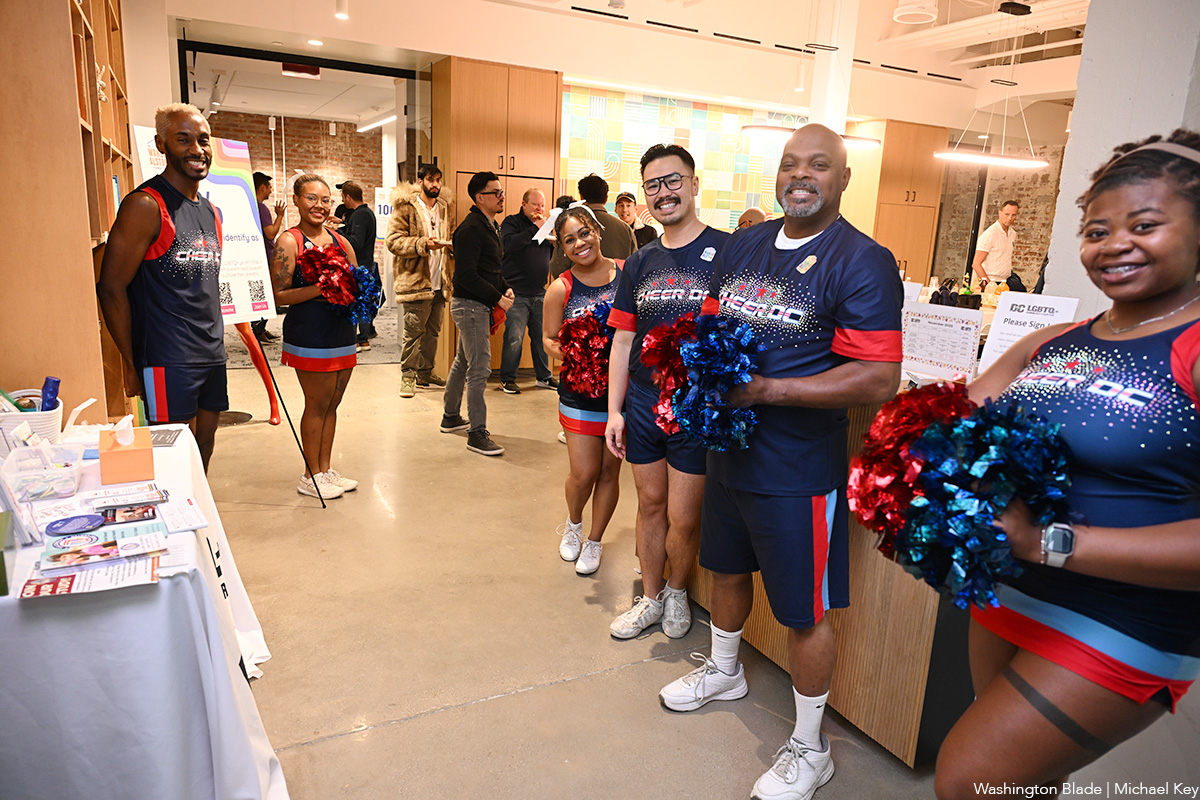

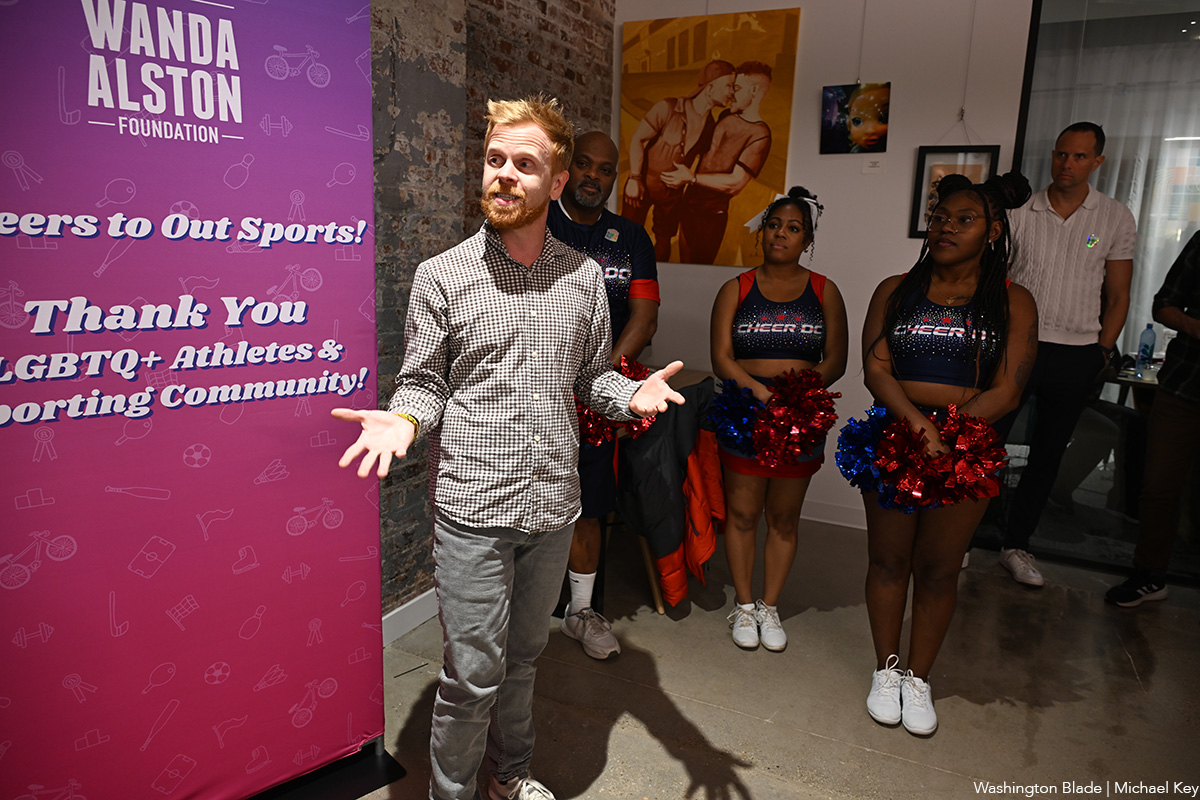
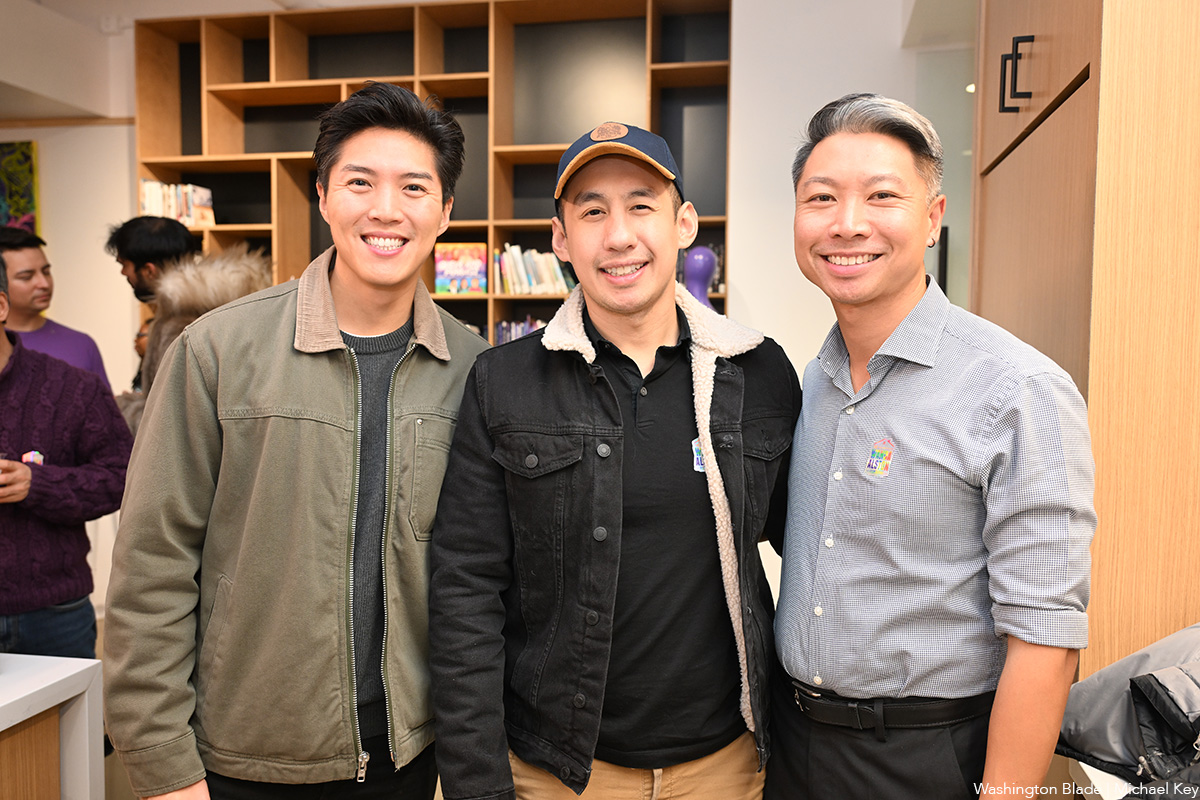
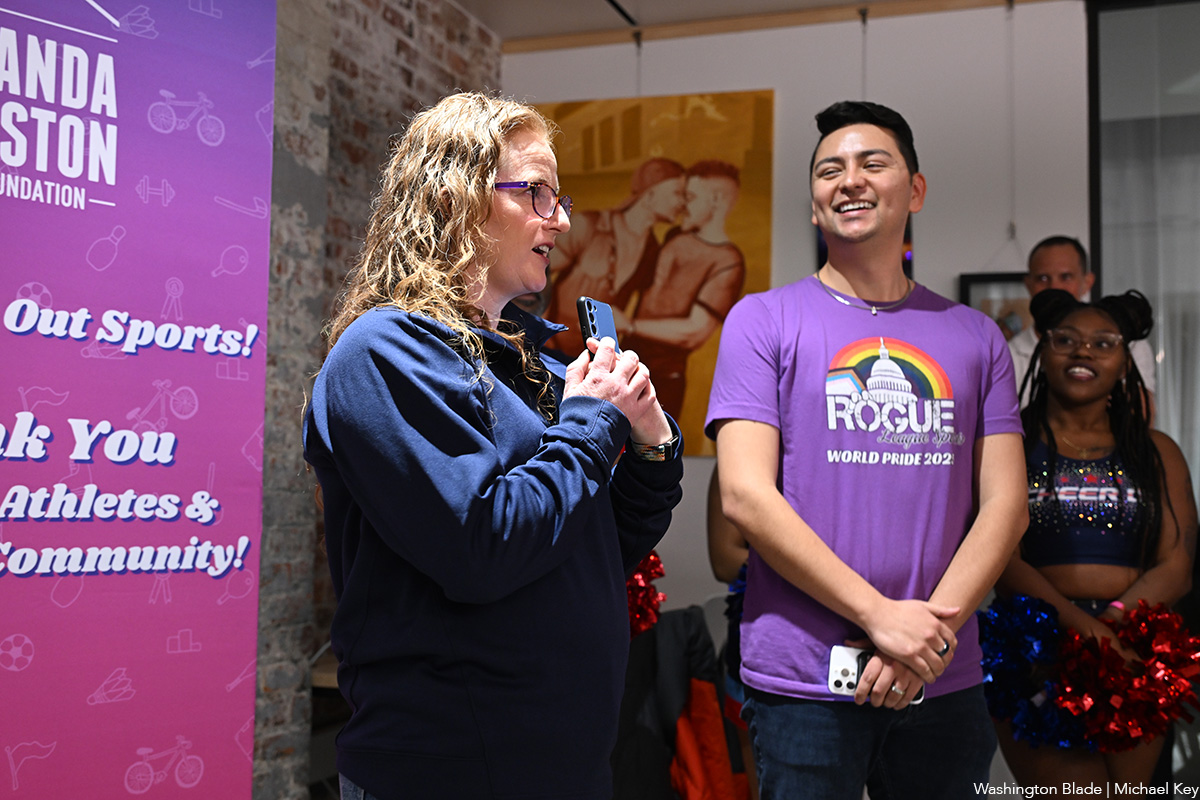
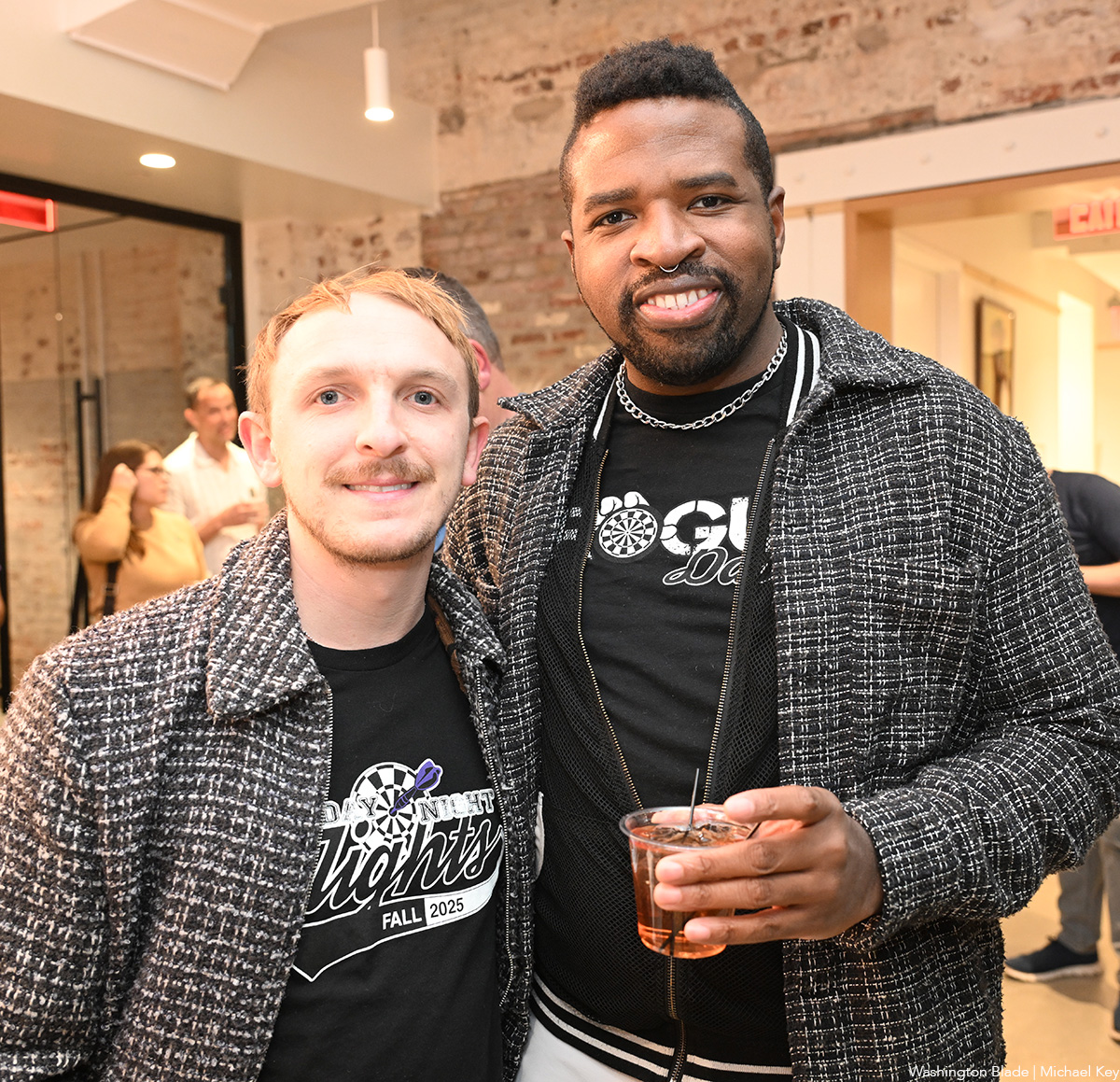
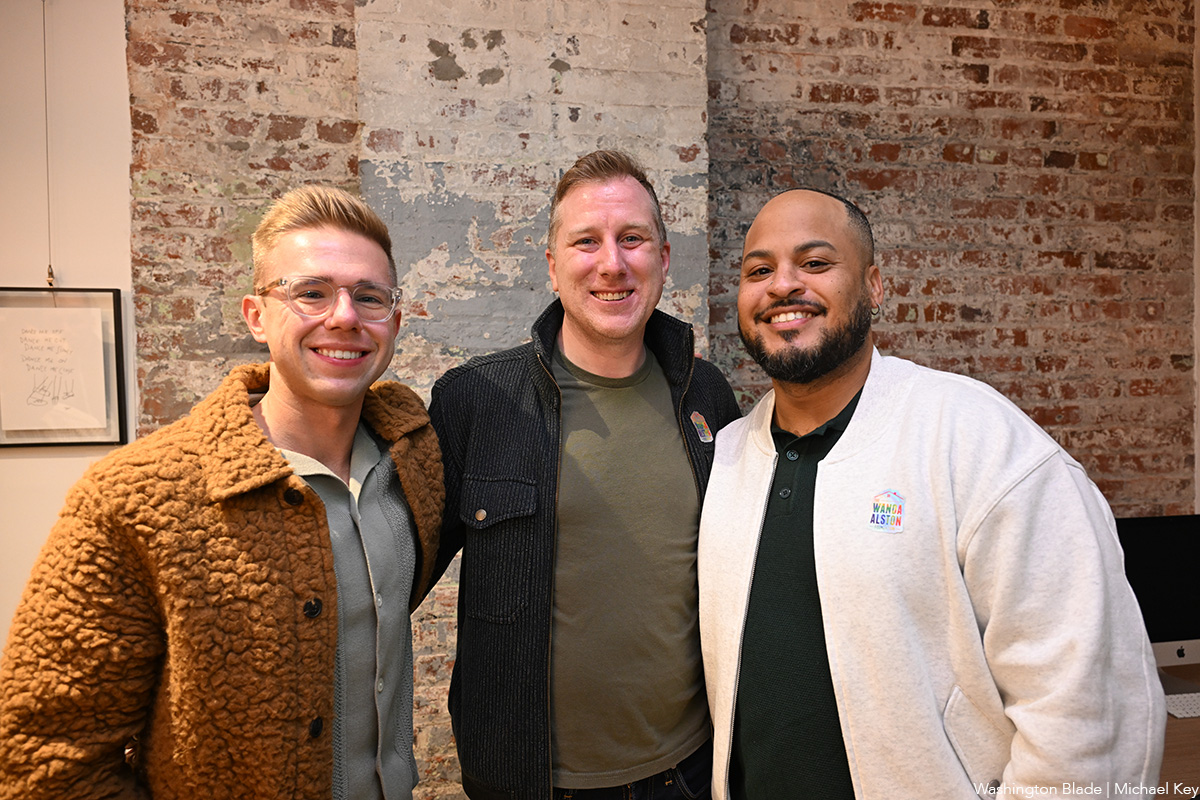
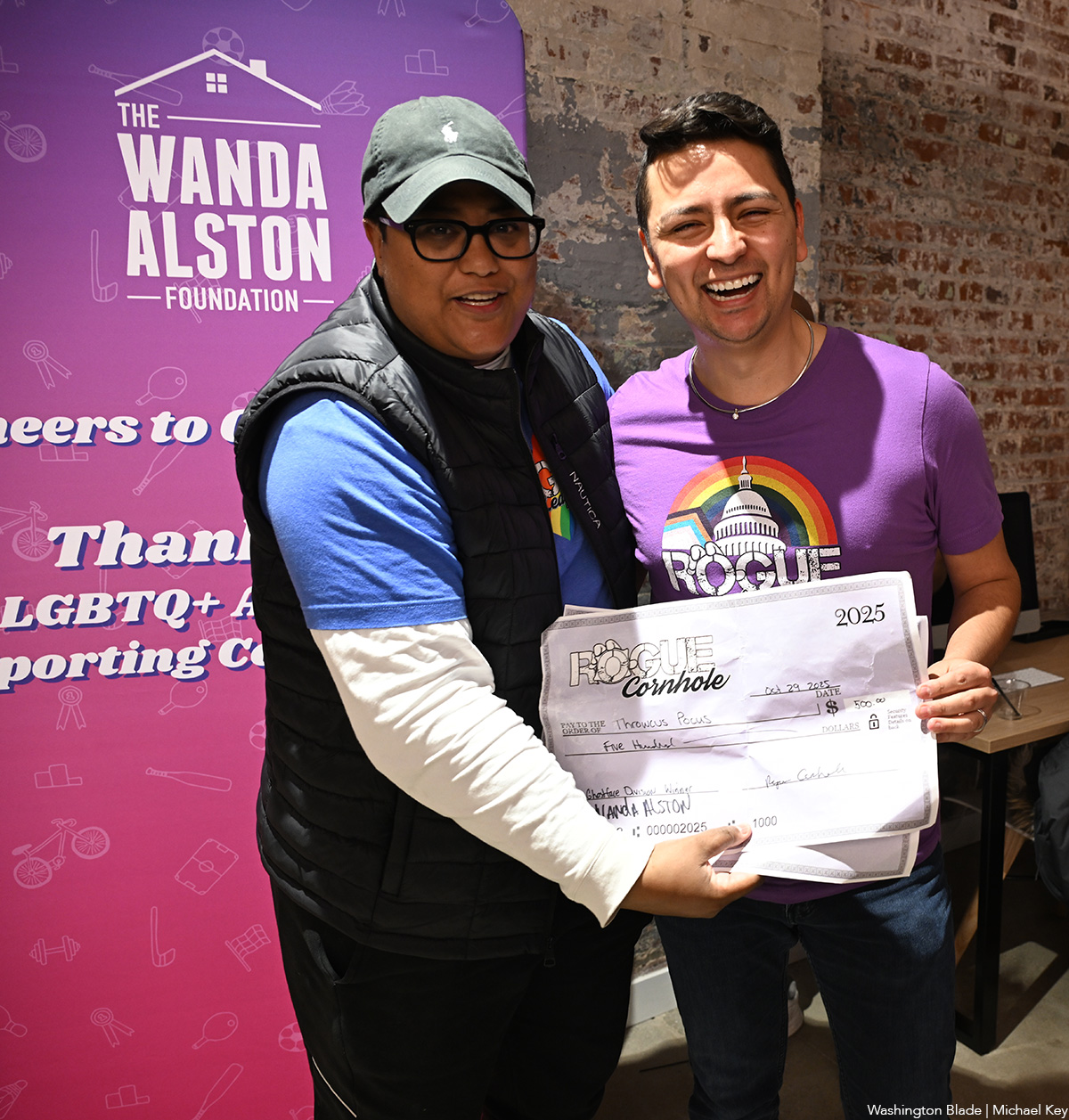

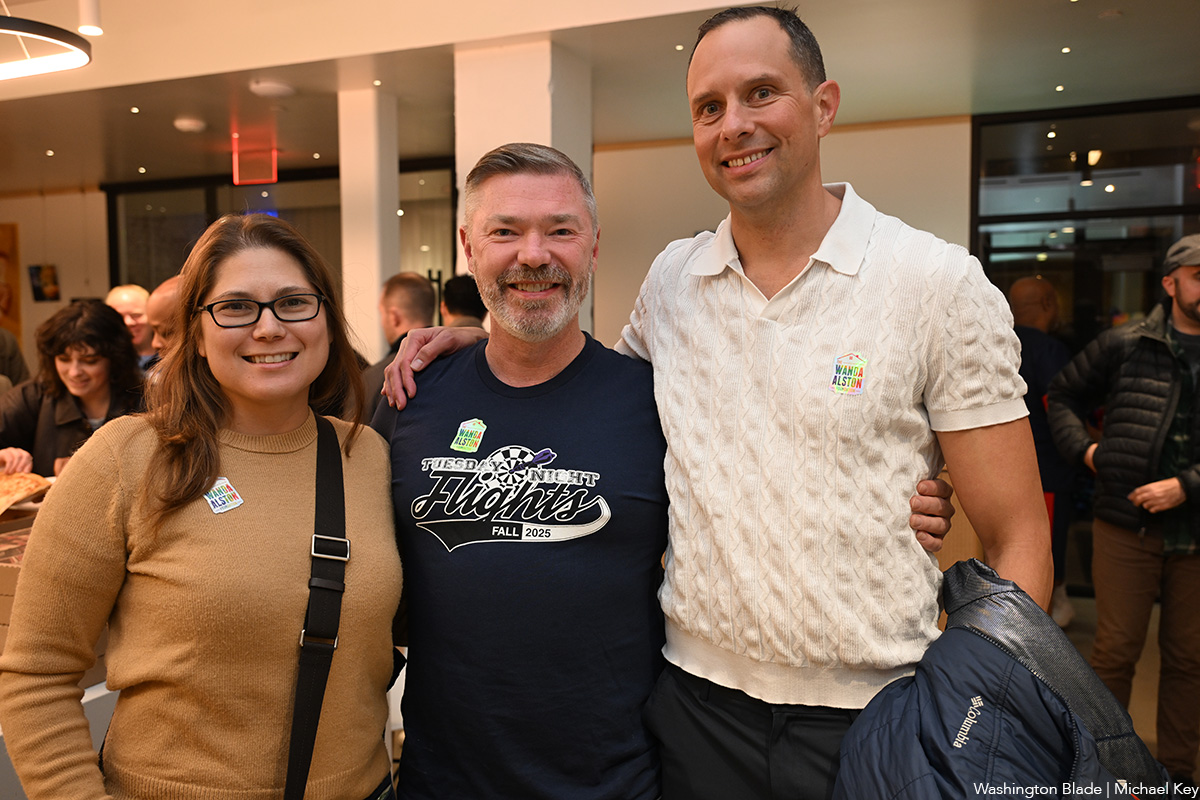
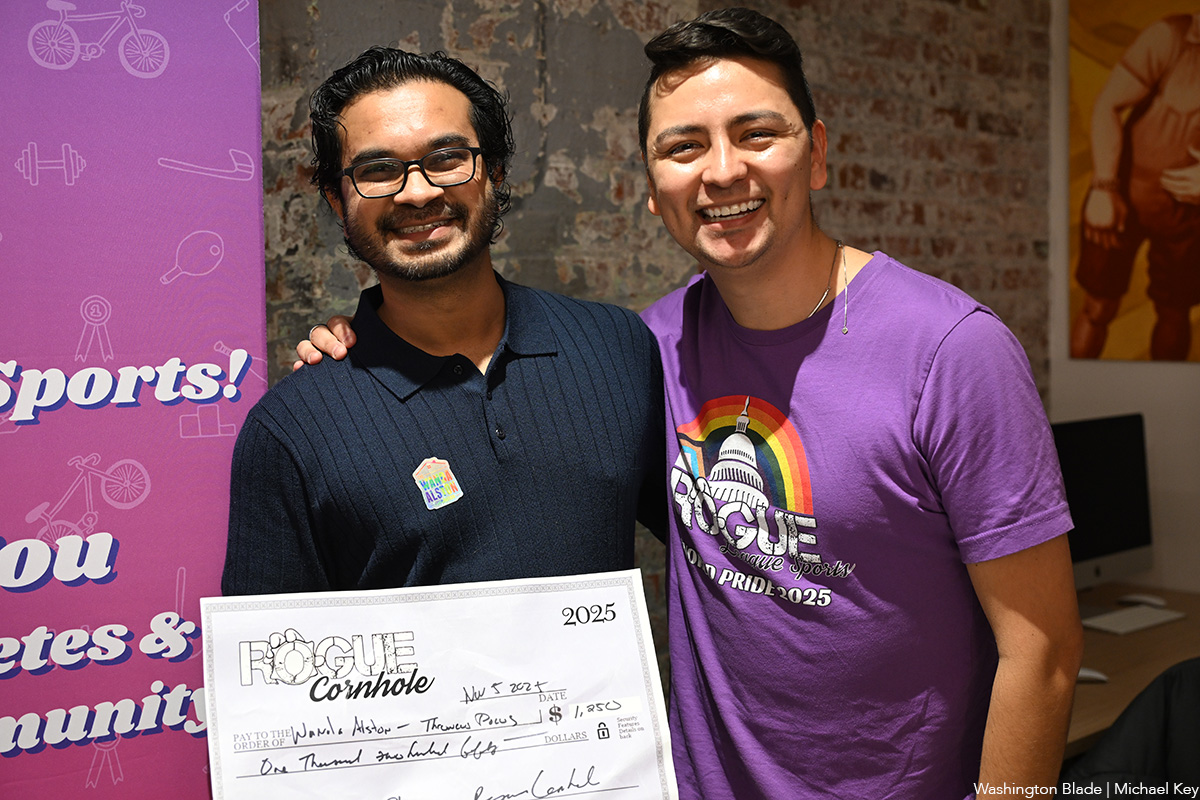
Theater
Gay, straight men bond over finances, single fatherhood in Mosaic show
‘A Case for the Existence of God’ set in rural Idaho

‘A Case for the Existence of God’
Through Dec. 7
Mosaic Theater Company at Atlas Performing Arts Center
1333 H St,, N.E.
Tickets: $42- $56 (discounts available)
Mosaictheater.org
With each new work, Samuel D. Hunter has become more interested in “big ideas thriving in small containers.” Increasingly, he likes to write plays with very few characters and simple sets.
His 2022 two-person play, “A Case for the Existence of God,” (now running at Mosaic Theater Company) is one of these minimal pieces. “Audiences might come in expecting a theological debate set in the Vatican, but instead it’s two guys sitting in a cubicle discussing terms on a bank loan,” says Hunter (who goes by Sam).
Like many of his plays, this award-winning work unfolds in rural Idaho, where Hunter was raised. Two men, one gay, the other straight (here played by local out actors Jaysen Wright and Lee Osorio, respectively), bond over financial insecurity and the joys and challenges of single fatherhood.
His newest success is similarly reduced. Touted as Hunter’s long-awaited Broadway debut, “Little Bear Ridge Road” features Laurie Metcalf as Sarah and Micah Stock as Ethan, Sarah’s estranged gay nephew who returns to Idaho from Seattle to settle his late father’s estate. At 90 minutes, the play’s cast is small and the setting consists only of a reclining couch in a dark void.
“I was very content to be making theater off-Broadway. It’s where most of my favorite plays live.” However, Hunter, 44, does admit to feeling validated: “Over the years there’s been this notion that my plays are too small or too Idaho for Broadway. I feel that’s misguided, so now with my play at the Booth Theatre, my favorite Broadway house, it kind of proves that.”
With “smaller” plays not necessarily the rage on Broadway, he’s pleased that he made it there without compromising the kind of plays he likes to write.
Hunter first spoke with The Blade in 2011 when his “A Bright Day in Boise” made its area premiere at Woolly Mammoth Theatre. At the time, he was still described as an up-and-coming playwright though he’d already nabbed an Obie for this dark comedy about seeking Rapture in an Idaho Hobby Lobby.
In 2015, his “The Whale,” played at Rep Stage starring out actor Michael Russotto as Charlie, a morbidly obese gay English teacher struggling with depression. Hunter wrote the screenplay for the subsequent 2022 film which garnered an Oscar for actor Brendan Frazier.
The year leading up to the Academy Awards ceremony was filled with travel, press, and festivals. It was a heady time. Because of the success of the film there are a lot of non-English language productions of “The Whale” taking place all over the world.
“I don’t see them all,” says Hunter. “When I was invited to Rio de Janeiro to see the Portuguese language premiere, I went. That wasn’t a hard thing to say yes to.”
And then, in the middle of the film hoopla, says Hunter, director Joe Mantello and Laurie (Metcalf) approached him about writing a play for them to do at Steppenwolf Theatre in Chicago before it moved to Broadway. He’d never met either of them, and they gave me carte blanche.
Early in his career, Hunter didn’t write gay characters, but after meeting his husband in grad school at the University of Iowa that changed, he began to explore that part of his life in his plays, including splashes of himself in his queer characters without making it autobiographical.
He says, “Whether it’s myself or other people, I’ve never wholesale lifted a character or story from real life and plopped it in a play. I need to breathing room to figure out characters on their own terms. It wouldn’t be fair to ask an actor to play me.”
His queer characters made his plays more artistically successful, adds Hunter. “I started putting something of myself on the line. For whatever reason, and it was probably internalized homophobia, I had been holding back.”
Though his work is personal, once he hands it over for production, it quickly becomes collaborative, which is the reason he prefers plays compared to other forms of writing.
“There’s a certain amount of detachment. I become just another member of the team that’s servicing the story. There’s a joy in that.”
Hunter is married to influential dramaturg John Baker. They live in New York City with their little girl, and two dogs. As a dad, Hunter believes despite what’s happening in the world, it’s your job to be hopeful.
“Hope is the harder choice to make. I do it not only for my daughter but because cynicism masquerades as intelligence which I find lazy. Having hope is the better way to live.”
Books
New book highlights long history of LGBTQ oppression
‘Queer Enlightenments’ a reminder that inequality is nothing new
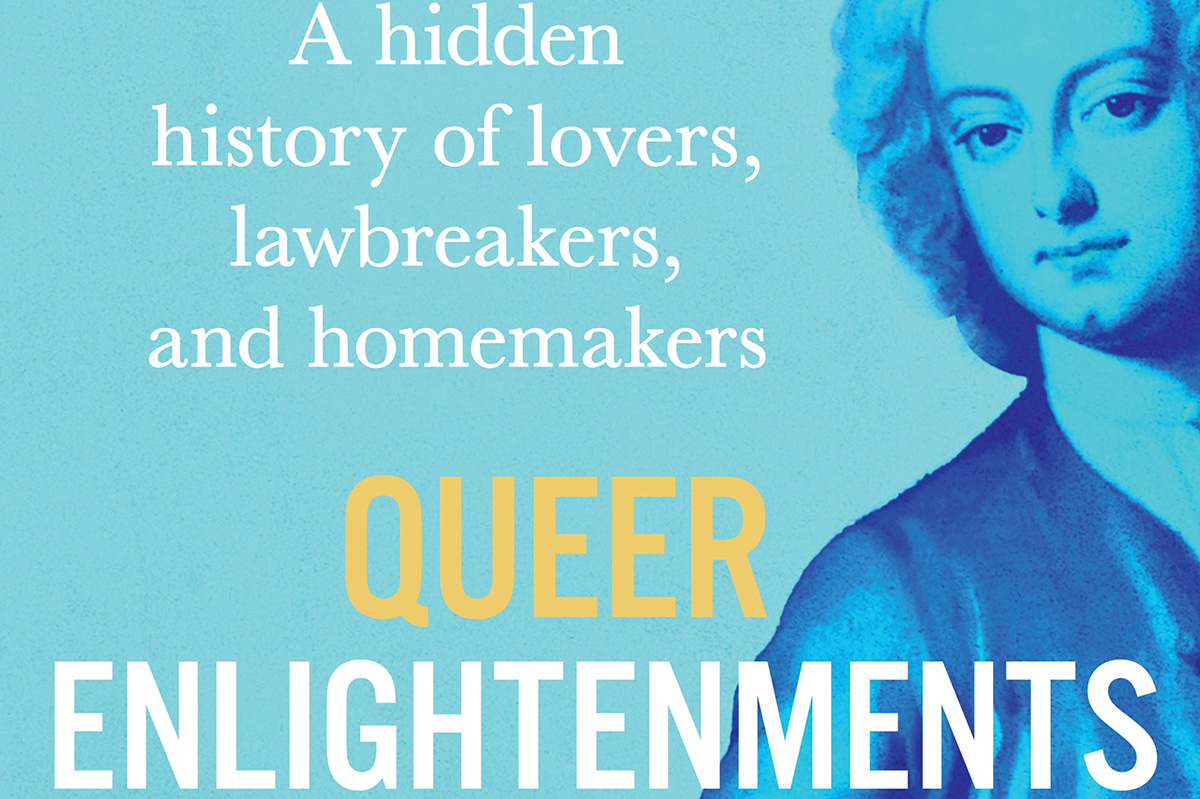
‘Queer Enlightenments: A Hidden History of Lovers, Lawbreakers, and Homemakers’
By Anthony Delaney
c.2025, Atlantic Monthly Press
$30/352 pages
It had to start somewhere.
The discrimination, the persecution, the inequality, it had a launching point. Can you put your finger on that date? Was it DADT, the 1950s scare, the Kinsey report? Certainly not Stonewall, or the Marriage Act, so where did it come from? In “Queer Enlightenments: A Hidden History of Lovers, Lawbreakers, and Homemakers” by Anthony Delaney, the story of queer oppression goes back so much farther.

The first recorded instance of the word “homosexual” arrived loudly in the spring of 1868: Hungarian journalist Károly Mária Kerthbeny wrote a letter to German activist Karl Heinrich Ulrichs referring to “same-sex-attracted men” with that new term. Many people believe that this was the “invention” of homosexuality, but Delaney begs to differ.
“Queer histories run much deeper than this…” he says.
Take, for instance, the delightfully named Mrs. Clap, who ran a “House” in London in which men often met other men for “marriage.” On a February night in 1726, Mrs. Clap’s House was raided and 40 men were taken to jail, where they were put in filthy, dank confines until the courts could get to them. One of the men was ultimately hanged for the crime of sodomy. Mrs. Clap was pilloried, and then disappeared from history.
William Pulteney had a duel with John, Lord Hervey, over insults flung at the latter man. The truth: Hervey was, in fact, openly a “sodomite.” He and his companion, Ste Fox had even set up a home together.
Adopting your lover was common in 18th century London, in order to make him a legal heir. In about 1769, rumors spread that the lovely female spy, the Chevalier d’Éon, was actually Charles d’Éon de Beaumont, a man who had been dressing in feminine attire for much longer than his espionage career. Anne Lister’s masculine demeanor often left her an “outcast.” And as George Wilson brought his bride to North American in 1821, he confessed to loving men, thus becoming North America’s first official “female husband.”
Sometimes, history can be quite dry. So can author Anthony Delaney’s wit. Together, though, they work well inside “Queer Enlightenments.”
Undoubtedly, you well know that inequality and persecution aren’t new things – which Delaney underscores here – and queer ancestors faced them head-on, just as people do today. The twist, in this often-chilling narrative, is that punishments levied on 18th- and 19th-century queer folk was harsher and Delaney doesn’t soften those accounts for readers. Read this book, and you’re platform-side at a hanging, in jail with an ally, at a duel with a complicated basis, embedded in a King’s court, and on a ship with a man whose new wife generously ignored his secret. Most of these tales are set in Great Britain and Europe, but North America features some, and Delaney wraps up thing nicely for today’s relevance.
While there’s some amusing side-eyeing in this book, “Queer Enlightenments” is a bit on the heavy side, so give yourself time with it. Pick it up, though, and you’ll love it til the end.
The Blade may receive commissions from qualifying purchases made via this post.

